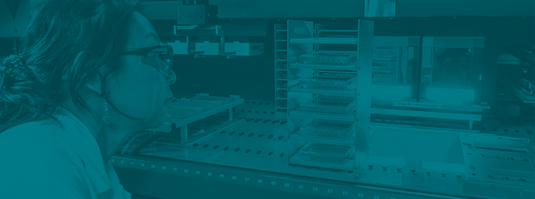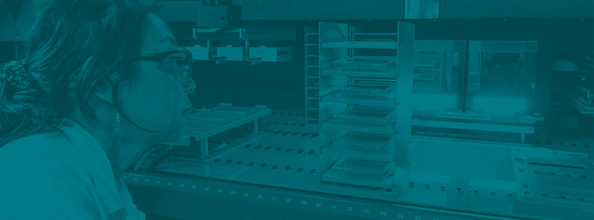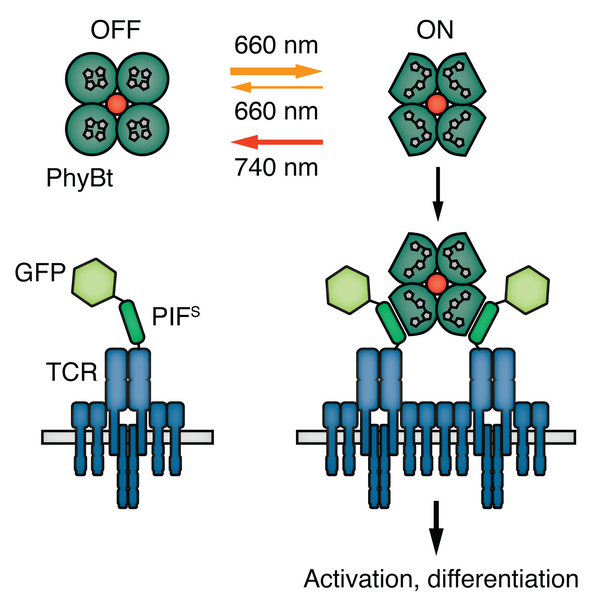Prof. Dr. Wolfgang Schamel (CIBSS-PI), Institute of Biology III – Immunology (Faculty of Biology), University of Freiburg
Stimulation of the T cell antigen receptor (TCR) with seconds-scale dynamics leads to long lasting effects on T cell activation and differentiation, initiating an immune response. How these dynamics exactly control T cell behaviour at the molecular level is not well understood. In detail, ligand-binding to the TCR causes TCR phosphorylation and the recruitment of signalling proteins. Consequently, a dynamic signalosome assembles that transmits the information of ligand binding further downstream to classical signalling pathways. Recently, Wilfried Weber’s and our groups have engineered a control-of-function system, to study how the dynamics of the binding of the ligand to the TCR impacts on signal transmission by the TCR. Based on the plant photoreceptor phytochrome B, we developed the so called opto-ligand-TCR to control the dynamics of ligand binding to the TCR by light of different intensities of 660 nm and 740 nm wave lengths. We show that a fast dynamics at the seconds scale (faster than 8 sec oscillations) does not lead to downstream TCR signalling, whereas a slow dynamics (slower than 8 sec) activates downstream signalling, such as Ca influx (unpublished). This distinction is called kinetic proofreading. In our CIBSS project, we want to use the opto-ligand-TCR system, in order to study how the dynamics of ligand binding controls signalosome assembly, activity of downstream signalling cascades and the activation and differentiation of human T cells. To reach our goals, we plan to cooperate with the groups of Julia Jellusova (metabolism), Maja Köhn (phosphatases), Susana Minguet (kinases), Ritwick Sawakar (transcriptome), Jens Timmer (mathematical modelling), Bettina Warscheid (proteomics) and Wilfried Weber (optogenetics). In conclusion, our project will contribute to better understand how T cells take decisions to mount an immune response or not.






